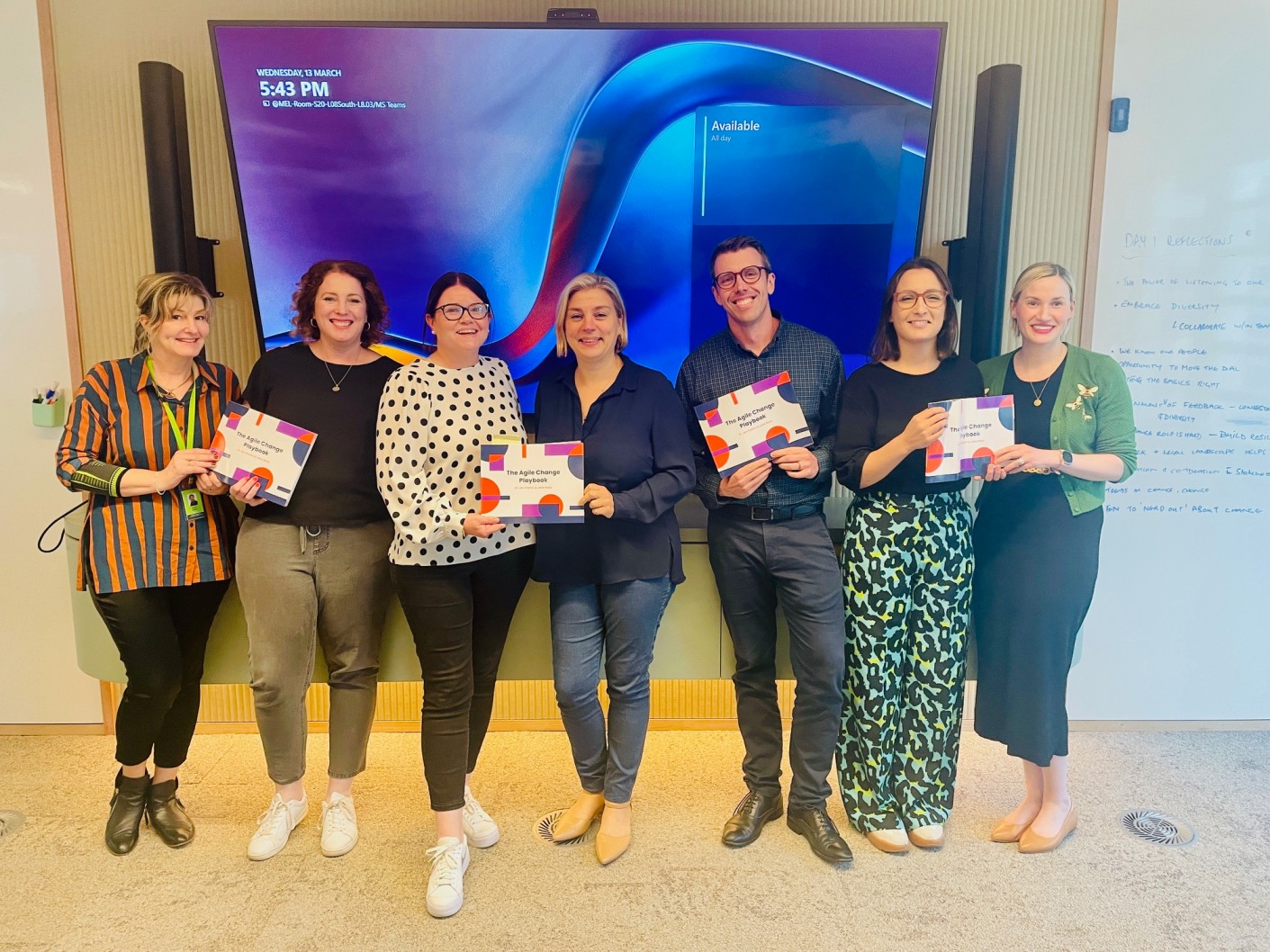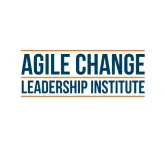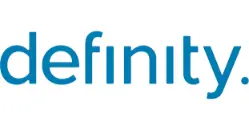In today’s fast-evolving corporate landscape, mastering agile change management is not just beneficial—it’s essential.
We often get asked by change managers, “Do you recommend a specific agile change management process?”
At the Agile Change Leadership Institute, we advocate a distinctive approach through what is known as the “Minimum Viable Change Process” (MCVP).
An MCVP is designed to empower leaders and managers as well as change managers with the tools necessary for effective and efficient change.
This process ensures that you can swiftly adapt and implement strategies that have an immediate impact, setting the foundation for sustainable success.
If you’d like to learn more about how to implement this into your organisation, we’ll break down what an MCVP looks like, how to integrate it into your agile change management process, and the benefits of this concept.
The Minimum Viable Change Process Explained
The Minimum Viable [Change] Process (MVCP) is a take on Agile’s Minimum Viable Product (MVP) where you define what is the smallest (and least effort) product you can release that will meet a customer’s need to then get feedback on how to develop it.
In a world where large change teams are rare, and change resourcing has become quite lean, it is necessary to establish the minimum change management work you can do and remain effective.
This ensures that transformation efforts are both manageable and impactful.
Key principles of the minimum viable change process include:
Targeted Change
The MVCP advocates for focusing on the most critical changes that yield the most immediate benefits.
Instead of overhauling entire systems or processes at once, it recommends pinpointing specific areas where quick wins are possible, which can lead to broader organisational buy-in and less resistance to future changes.
Iterative Development
Similar to agile project management, the MVCP uses an iterative approach to manage change.
Each cycle involves planning, executing, evaluating, and learning from small-scale changes before scaling them up.
This results in a process that is flexible and responsive to new insights and feedback.
Stakeholder Collaboration
Ensuring that all relevant stakeholders are involved in the change process from the outset is crucial.
The MVCP places a strong emphasis on collaboration and open communication, which helps align all parties involved with the organisational goals and mitigates the risk of misalignment and conflict.
Rapid Implementation
By focusing on minimum viable changes, organisations can execute changes more quickly than traditional approaches.
This rapid implementation allows for faster adaptation to new challenges and opportunities, keeping the organisation agile and competitive.
Feedback and Adaptation
Critical to the MVCP is the continuous loop of feedback and adaptation.
By regularly collecting and analysing feedback from all levels of the organisation, the process remains dynamic and continually improving
This assures that changes are always aligned with the organisation’s evolving needs.
The Minimum Viable Change Process is not just about reducing the scale of change but about making change more thoughtful, strategic, and aligned with immediate business needs.
By adopting this process, leaders can ensure that their change management efforts are both efficient and effective
This provides a solid foundation for continuous improvement and agile adaptation.
Developing an MVCP or Agile Change Management Process
Would you like to try out an agile change process or MVCP without letting go of your existing change management process or model? It’s easy to do!
The first phase is to map. Take your existing change management process, for example: “Discovery, Design, Develop, Deploy, and Sustain” and put those headings on a piece of paper.
What we want you to do is to map the three agile change capabilities analysis, engagement and communication to your preferred change model of choice.
So under each heading, work through what is the optimum mix of the three agile change capabilities.
You might like to think about differentiating the capabilities by light, medium, and heavy.
Or perhaps you like numbers, and you want to use a ratio or a percentage mix.
It really doesn’t matter. Perfection or being right is not the goal here.
So for example, you might make the discovery phase heavy on analysis, moderate on engagement, and light on communication.
Then, using the Agile Change Playbook, or perhaps your own toolkit, map the various practices to each of these mix of capabilities.
The first time you do this, you’ll end up with a very long list of practices against your own preferred change model, and that’s okay because there are two more phases of logic to be thinking about.
Your next task is to identify which of the agile change practices you need and which you can let go of.
The goal is the smallest number of practices that do the job quickly. You can do this by asking the following four questions:
- What are your business sponsors’ OKRs?
- Which of these change practices will deliver on those OKRs?
- How many people do you have in your team?
- What are their capabilities?
If you’re new to agile, OKR is an acronym that represents time-bound objectives and key results (Objectives and Key Results)
It’s shorthand for what is important to your sponsor.
When you start looking at your work through the lens of your sponsor’s objectives, you will find that it gets easier to simplify your agile change practice.
And it is important to simplify. You’ll be doing your agile change practices in much shorter cycles than you’re used to, and with fewer people to do it.
So, for those who like an equation, this three-phase logic looks like this: take the mapping of change capabilities and practices against your preferred framework, add your sponsor’s objectives, and divide by your team capability and size.
The Benefits of Incorporating an MVCP or Agile Change Management Process
Adopting the MVCP as part of your agile change management strategy offers numerous benefits that enhance the agility and responsiveness of your organisation.
Here are some of the key advantages:
Increased Adaptability
Minimum Viable Changes are designed to be small and manageable, which means they can be implemented quickly in response to new information or shifting market dynamics.
This enhances the organisation’s ability to adapt more swiftly to external pressures, ensuring a competitive edge in rapidly changing environments.
Faster Implementation
By focusing on smaller, more manageable changes, the MVCP allows for quicker execution and implementation.
This rapid approach reduces downtime and accelerates the pace at which benefits are realised, enabling organisations to achieve their goals faster.
Enhanced Stakeholder Engagement
The iterative nature of the MVCP encourages continuous feedback from stakeholders throughout the change lifecycle.
This not only helps in refining the changes based on real-world input but also increases engagement and buy-in from those affected by the changes, reducing resistance and fostering a more inclusive workplace culture.
Reduced Risk
Implementing change in smaller increments allows potential issues to be identified and addressed early in the process, significantly reducing the risks associated with large-scale transformations.
This staged approach provides an opportunity for course corrections and adjustments without jeopardising the overall success of the initiative.
Better Resource Allocation
With Minimum Viable Changes, resources are allocated to smaller, clearly defined projects, enhancing the efficiency of resource use.
This focused allocation helps prevent overcommitment and resource wastage, ensuring that every effort delivers maximum impact.
Continuous Learning and Improvement
The agile framework fosters an environment of continuous learning, where each cycle of change provides valuable insights.
These insights fuel improvement in subsequent initiatives, enhancing overall organisational effectiveness and resilience.
By using an MVCP with your agile change management practices, your organisation can achieve more successful outcomes and become a stronger, more adaptable business.
This approach not only streamlines the change management process but also aligns it more closely with the evolving needs and expectations of the business and its stakeholders.
Case Study: Aurecon
The Enterprise Change team at award-winning and highly innovative global engineering firm Aurecon recently used the Certificate of Agile Change Management to help them develop their Minimum Viable Change Process.
Through a process of test and learn, and feedback-driven iteration the change managers went through the 50 agile change practices in the Certificate program and nominated what they believed the initial MVCP should be for all projects.
They then used those practices and tested which worked the best and which didn’t go so well. They revised their MVCP based on feedback within the team on what was missing.
They also did a healthy level of introspection and challenged themselves to let go of practices and tools that were cumbersome but made them feel comfortable.
This MVCP is now being used on all projects by change practitioners of all levels and is creating consistency and quality at pace.

Getting Started with Agile Change Management and Minimum Viable Change
Are you looking to take your Agile skills to the next level?
We offer online Agile Change Management training that will equip you with expert knowledge and practical tools to effectively lead and implement Agile transformations in your organisation in just over 4.5 hours!
Perfect for both individuals and organisations looking to upskill their management staff, our course includes:
- 23 micro lessons in 5 modules
- Over 50 agile change practices to try
- A downloadable library of over 55 agile change practice templates to streamline your professional life
- A comprehensive multiple-choice assessment to conclude the course
- Must-have agile change resources to give you confidence in your work
- A continuously curated list of over 60 resources for additional reading
- A copy of our book “The Agile Change Playbook” – a finalist in the Australian Business Book Awards (2021)
- A digital badge to amplify your LinkedIn profile
If you’d like to learn more about whether this course is right for you or your team, give us a call on 1300 959 496 or via our online contact form today!


































